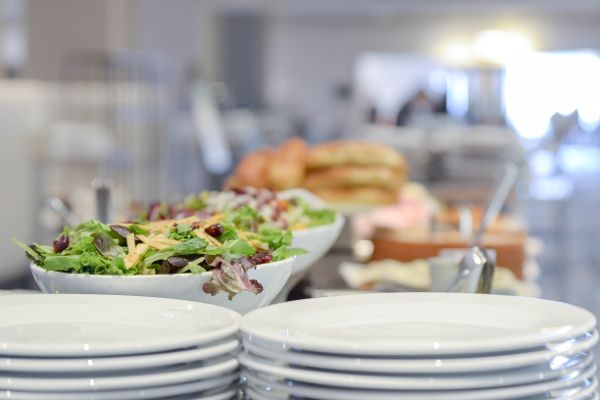Here we go: Superior quality on our plates

Regional food is wholesome, eco-friendly and good for the economy in the region, in particular for agriculture. The Federal Government sets a good example and developed a guideline also informing municipalities and public canteens about ways of obtaining regional and seasonal food.
People are increasingly seeking regionally-produced food:
Three quarters of the people living in Austria would be happy about a more abundant supply. Therefore, the Federal Government launched the initiative “Austria eats regionally” (“Österreich isst regional”) and the action plan “Sustainable Procurement”. It wants to set a good example with the aim of providing exclusively regional and seasonal food in public institutions, while at the same time increasing the share of organic food. This has been anchored in the government programme.
The Austrian Federal Procurement Agency, Bundesbeschaffungs GmbH (BBG), was therefore mandated to support public canteens in their efforts to purchase more regional and seasonal foods. Moreover, a guideline on sustainable food procurement (“Leitfaden zur nachhaltigen Lebensmittelbeschaffung”) has been prepared for municipalities and public canteens. It offers tips and step-by-step instructions, answers questions on any additional expenses or efforts that may be incurred, on the search for providers and many more, and includes a concrete example illustrating how effectively regional procurement can work.
Advantages of regional procurement
Foods from the region have many advantages: They offer transparent quality standards, for example by means of the “Bio-Siegel” (the “biolabel”), the seals for PDO, PGI and TSG or the “AMA-Gütesiegel” (“AMA quality label”). Moreover, thanks to the short transport routes regional and seasonal products are fresher, contain more vital substances and are therefore also healthier. Furthermore, food and vegetables harvested ripe taste considerably better. It is also clearly better for the environment and more climate-friendly to opt for food requiring only short transport routes - above all if fresh and unprocessed products are ordered instead of deep-frozen products.
What is considered “regional”?
There are different definitions for the origin of a product. Usually “regionality” refers to foods that were produced or processed in proximity to the establishment supplied. Regions can have different sizes. The basic rule is: “The closer, the better”. As it is not always clear where a product comes from, it is important to look out for recognised certificates and designations of origin.
Step by step towards regional procurement
For the switch towards more a regional and seasonal food procurement system, the guideline recommends the following steps:
- Status quo analysis of currently ordered products, criteria and regional products
- Develop new goals with the involvement of all stakeholders
- Feedback & monitoring, for example in the form of talks with team and guests
- Include recommendations from the action plan for sustainable procurement
- Environment analysis, for example on strengths of the region, local producers and possible support
- Integration into everyday life; start with simple sectors
For more details, please see the guideline “Leitfaden zur nachhaltigen Lebensmittelbeschaffung”.
Action Plan for Sustainable Public Procurement
The “National Action Plan for Sustainable Public Procurement” (“Nationaler Aktionsplan zur nachhaltigen öffentlichen Beschaffung”, abbr. “naBe”) is a key measure to implement a climate-neutral administration. Compliance with its criteria is mandatory in public procurement processes.
A vital element is the procurement of regional and seasonal food and services in mass catering. This goes hand in hand with high-quality and healthy nutrition, the promotion of animal welfare, soil protection as well as a regional and thus environmentally friendly and climate-compatible food production.
Essential procurement criteria for food and catering
- Gradual increase of the minimum share of foodstuffs from organic farming from 25 % in 2023 to 55 % in 2030
- High animal welfare standards for the procurement of foodstuffs of animal origin
- Fish from regional water bodies or sustainable aquaculture
- Climate plate: At least one vegetarian or vegan main course per day
- Information on the origin of meat, eggs and milk must be available close to the seats for guests
- Reuse systems for packages and transport systems
- Measures to prevent food waste